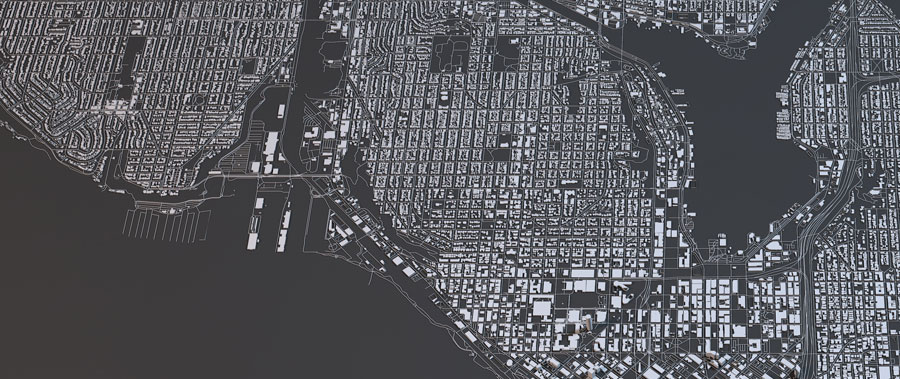Transfer of Development Rights (TDR) is a market-based mechanism that encourages the voluntary transfer of growth from areas a community wants to conserve to urban areas where growth should be encouraged, consistent with GMA goals.
A TDR program does not limit growth; rather, it allows communities to plan more effectively by directing that growth into areas most appropriate for it
TDR programs are recognized and encouraged in the Washington State Growth Management Act (GMA) as an innovative land use management technique. In comprehensive plans and development regulations, communities can identify which areas are suitable to grow at higher intensities and how much additional development is desired.
Jurisdictions can customize the elements of the program to reflect their conservation and development objectives, as well as market conditions and growth patterns unique to a particular area.
TDR guidance
- RCW 43.362 – Regional Transfer of Development Rights Statutory Authority
- Resource Guide to Designing TDR Programs in Washington State (PDF)
- TDR Performance Measures Report, March 2011 (PDF)
- Citizen’s Guide to TDR in Your Neighborhood (PDF)
- TDR Incentives that Jurisdictions Can Provide for Developers (PDF)
- TDR in Washington State: Overview, Benefits, and Challenges, 2008 (PDF)
Regional Transfer of Development Rights Alliance
The Regional Transfer of Development Rights Alliance is a partnership of King County, Pierce County, Snohomish County, Kitsap County Forterra, the Washington State Department of Commerce and the Puget Sound Regional Council.
The Alliance works to encourage cities to participate in the conservation of farm, forestry and open space land through Transfer of Development Rights (TDR) in the four central Puget Sound counties (King, Pierce, Snohomish, and Kitsap). The Department of Commerce is an active partner, providing direct technical assistance to counties and cities in the four-county central Puget Sound region.
In June 2013, the Alliance submitted its final report to the U.S. Environmental Protection Agency. Titled Regional Transfer of Development Rights in Puget Sound, it highlights the regional accomplishments of TDR programs in Western Washington and the benefits of TDR programs in general.
Regional Transfer of Development Rights in Puget Sound: A Regional Alliance of Puget Sound Counties, Cities, the Puget Sound Regional Council, Forterra and Department of Commerce – June 2013
Landscape Conservation and Local Infrastructure Program
The Landscape Conservation and Local Infrastructure Program (LCLIP, RCW 39.108) takes the concept of regional TDR further by creating a financial incentive for cities to use the tool. Designed by Forterra, LCLIP authorizes cities to access a form of tax increment financing in return for: 1) the creation of a TDR program; and, 2) the acceptance of a specified amount in regional development rights. In exchange for the placement of development rights in LCLIP districts, the jurisdictional county agrees to contribute a portion of its regular property tax to the sponsoring city for use for a defined period (up to 25 years). This revenue is directed to infrastructure investments that support growth in TDR receiving areas. The program is only available to select cities in the central Puget Sound counties of King, Pierce, and Snohomish. LCLIP is the first and only program of its kind in the United States.
Local TDR implementation
Example criteria
- Watershed Characterization
- The Washington Department of Ecology has created GIS layers and maps for all 19 Water Resource Inventory Areas in the Puget Sound basin using watershed characterization methods. The maps identify areas most suitable for protection, restoration or development based on the importance and impairment of waterflow in each watershed.
Contact Colin Hume at the Department of Ecology, Shorelands and Environmental Assistance Program for more information.
Priority habitats and species
- Priority Habitat and Species List (wdwf.wa.gov)
- Washington Department of Fish and Wildlife (WDFW) maintains a list of species and habitats in Washington state that are highly vulnerable to land use activities. The list is supported by databases of species and habitat locations that can be used for identifying sending areas.
- Local Habitat Assessment – WDFW has developed a habitat assessment tool that ranks relative habitat value across a whole county or watershed. The Local Habitat Assessment, or LHA, methodology produces a color-coded map that is easy to interpret and use to inform sending areas with the greatest habitat value. An LHA is available upon request.
- Landscape Planning for Washington’s Wildlife (PDF) – WDFW developed guidance to help local land use and conservation planners consider biodiversity in the planning process. This document recommends use of TDRs to minimize the impacts of development to conserve biodiversity and provides information for identifying sending areas that will best serve wildlife.
The law authorizes the Regional TDR program and directs the Department of Commerce to develop program performance measures. The Regional TDR Alliance has developed these measures that counties and cities will report biannually to Commerce for posting here. The law authorizes the Regional TDR program and directs the Department of Commerce to develop program performance measures. The Regional TDR Alliance has developed these measures that counties and cities will report biannually to Commerce for posting here. The following cities and one county have conducted market analyses to prepare for planning for receiving areas.
- Everett – TDR Feasibility Study, April 2012 (PDF)
- Issaquah – TDR Market Analysis, March 2012 (PDF)
- Mountlake Terrace – Market Study to Address Future TDR Program, 2012 (PDF)
- Normandy Park – Manhattan Village Subarea Plan, (PDF)
- Seattle South Lake Union – South Lake Union TDR Economic Analysis, May 2012 (PDF)
- City of Snohomish – Conversion Rate Analysis for TDR, December 2011 (PDF)
- City of Tacoma – TDR Program Market Study, August 2012 (PDF)
- Snohomish County – Purchase of Development Rights/Transfer of Development Rights (PDF), May 2011
- TDR Economics Presentation by Darren Greve, King County, January 2011 (PDF)

